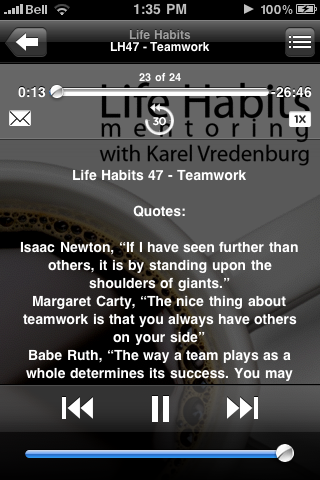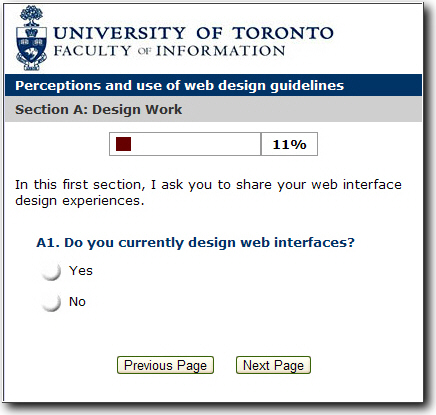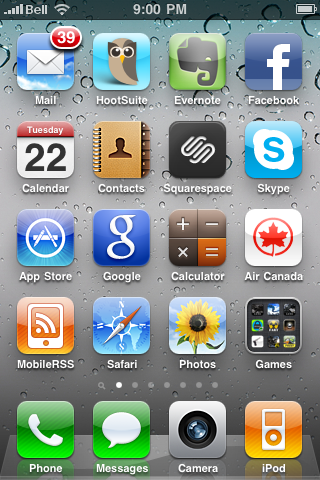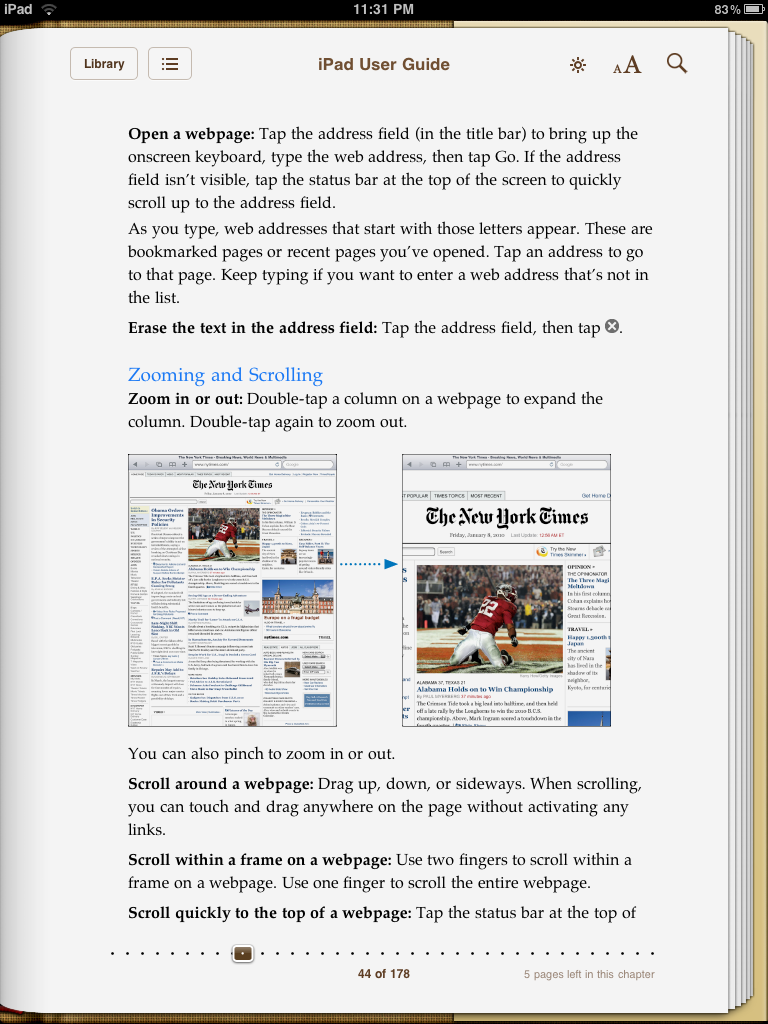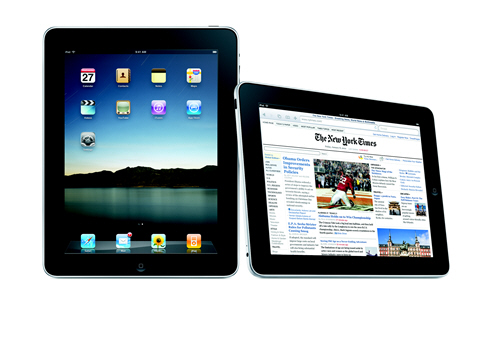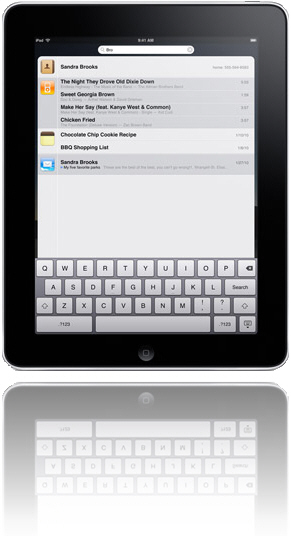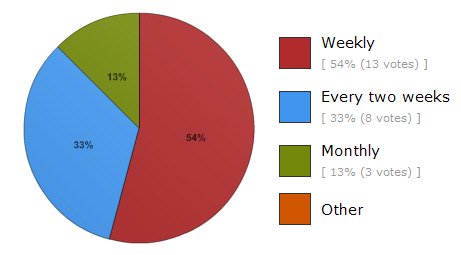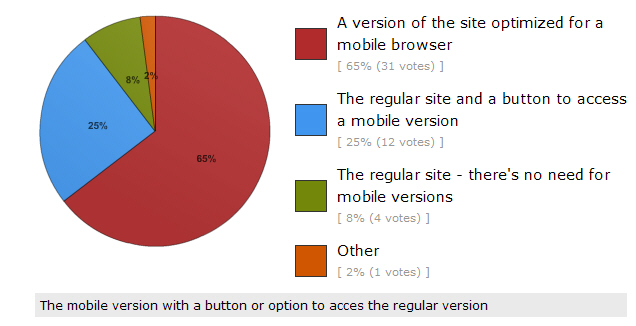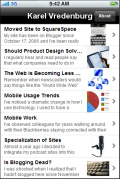I've been thoroughly enjoying the use of my iPhone as regular readers of this blog will know from my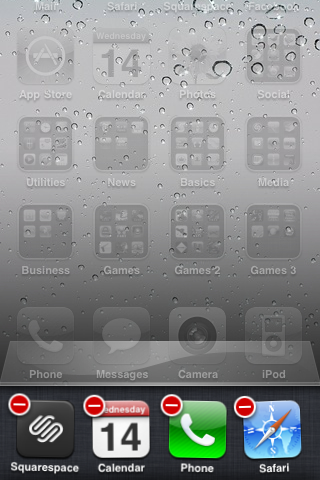
I do have first-hand experience with the new version of the operating system, iOS4, running on my iPhone 3GS. Since installing the new OS, my phone had been operating strangely: it would die even though it had a full battery charge, spontaneously reboot, and crash apps while I was using them. I was heart-broken that my wonderful iPhone had now developed some fatal flaw and the device that I could trust to always work now would be as unreliable as previous devices I'd used were.
A friend suggested I take it into an Apple store to have a Genius check it out. I did that. What I learned absolutely shocked me. The Genius ran a diagnostic program which reported a lack of available RAM. On further investigation it was determined that the lack of available RAM was due to multitasking. I haven't used multitasking much but was surprised to learn that many of the 100 or so apps I have on my iPhone were still running, albeit in suspended mode in most cases. Turns out that I didn't have the appropriate user model for the way multitasking works on the iPhone. I wonder how many users share my confusion. Here's actually how Apple designed multitasking to work. Every app you launch until you reboot is running in multitasking mode - and taking up memory! Guess how you're expected to stop apps from multitasking and taking up memory? You have to get into delete mode and delete by press the minus sign on every app in the multitasking tray! (see the screen capture above) Apparently, Steve Jobs when announcing iOS4 said something to the effect of companies who's multitasking operating systems require a task manager (meaning Microsoft's Windows) has failed to do its job. Well then, Apple has failed to do its job because not only is the multitasking tray on the iPhone a task manager, it requires you to manually delete every app you want to stop running on your device! If I could disable multitasking I would. Now I have to spend time manually deleting apps or reboot regularly both of which are a waste of time. I sure hope that the maintenance release of iOS4 fixes this problem and the one that iPhone 4 users are experiencing.
Apple is known for brilliant design but due to its intensely secretive culture, it doesn't do much user testing. It seems to me that the problems with the iPhone 4 and the problem I've identified here with the design of iOS4 may have been a casualty of this culture. I'd appreciate any thoughts you may have on this.
